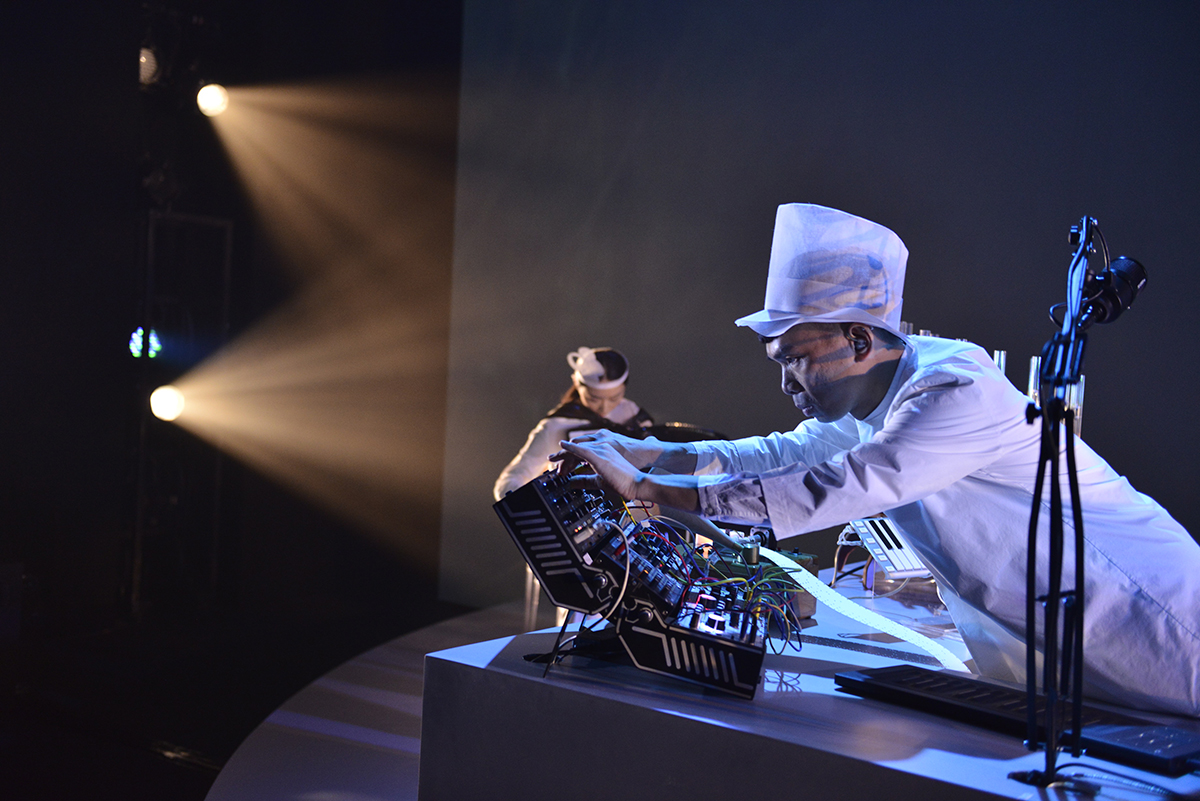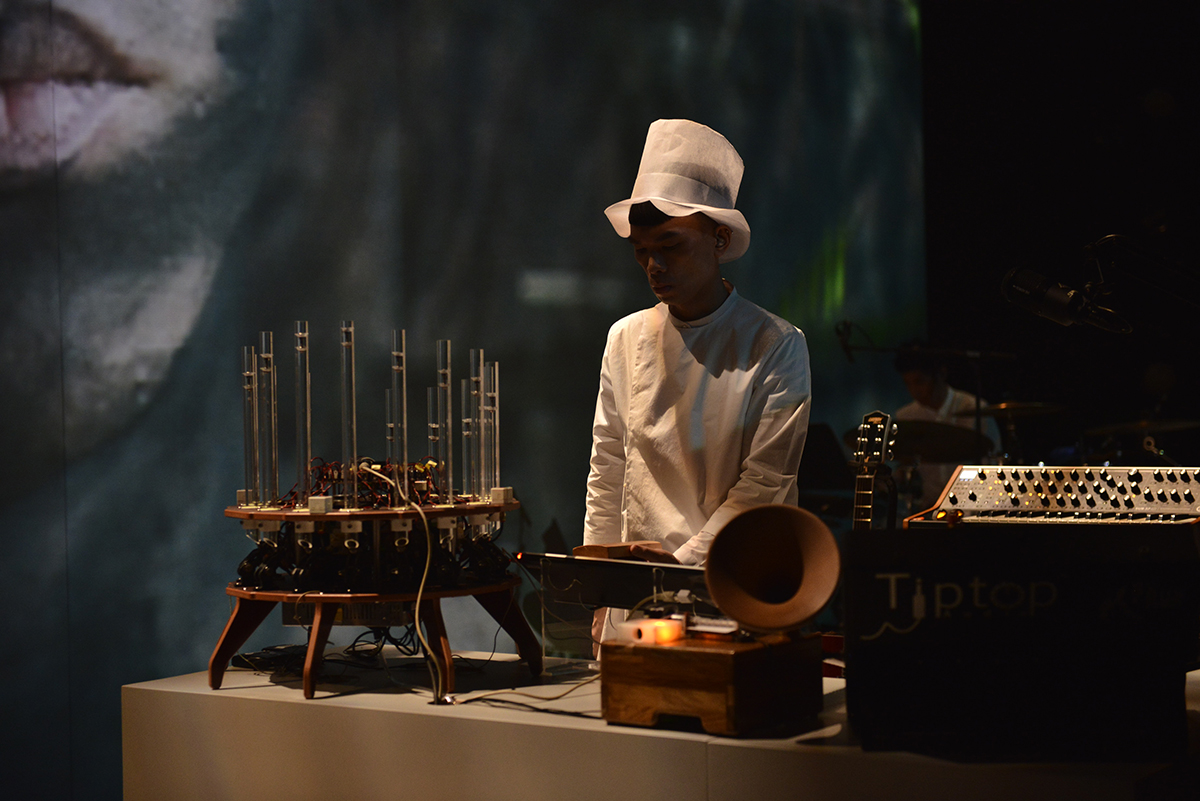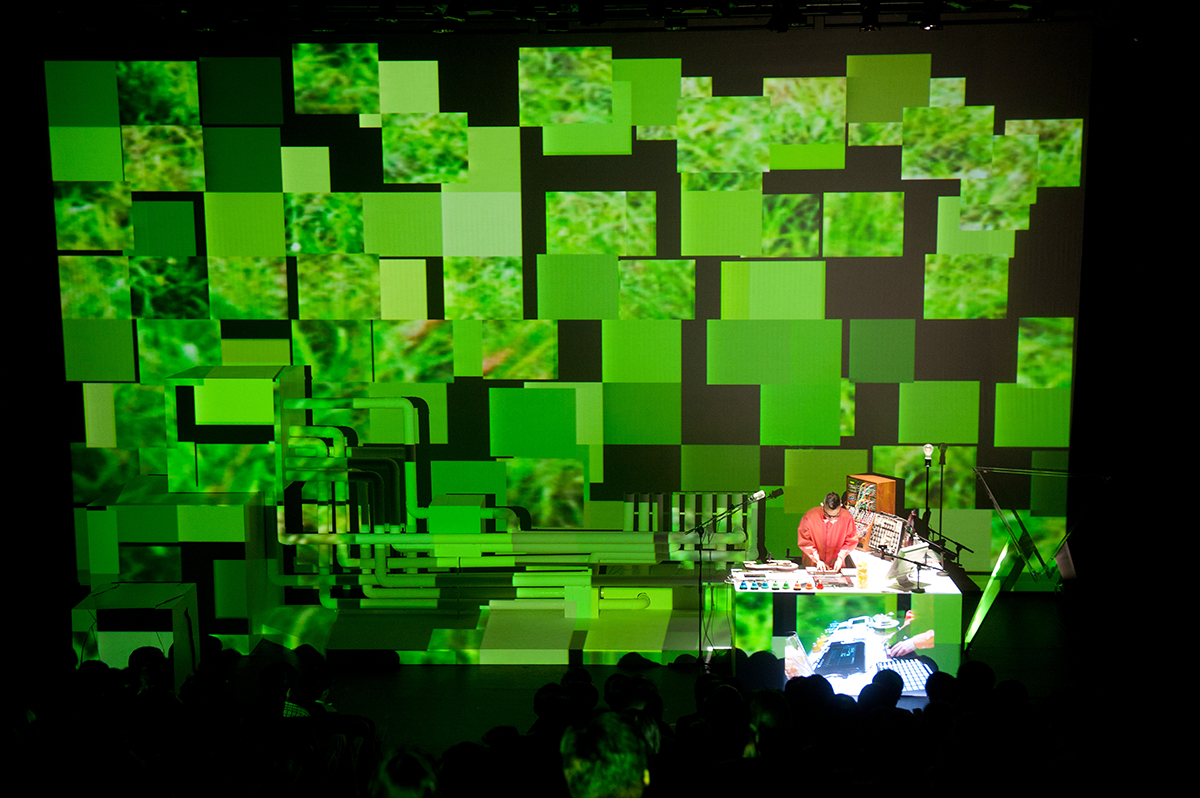
Visualising sound, making Home
Keith Leung Kei-cheuk is GayBird, a prolific composer, performer, producer, visual artist and creator of new musical instruments who makes sound installations and audiovisual artworks. A classically trained composer, he has a masters degree in music composition and electro-acoustic music from the Hong Kong Academy for Performing Arts, and a Master of Philosophy (creative media) from Hong Kong City University. As his videos demonstrate, he composes and performs in the widest variety of musical styles and genres, his work can be hypnotically beautiful and often complex and elaborate, and he pushes every new-media boundary.
On his website, GayBird expresses an organic vision. “I don’t divide sound, music, art and technology in my creations, in fact I can’t.” He considers that musical evolution has been accompanied by the evolution of instruments and the combination of sound with visual material and installation, often involving audience interactivity.
GayBird’s Living for Machines is a combination of installation and performance in which the artist’s bodily functions and actions trigger the production of sound and visual effects. He wears largely unseen sensors and interacts at times informally with his audience — a handshake, for example, can have artistic results, but also allows the audience input and a degree of control. With GayBird as a working part of his installation, he is asking if machines work for humans or humans serve machines. By contrast, Gravitation in Time is a work for orchestra, robotic instruments and electronics, with notated scores for the orchestra. The conceptual, technical and musical diversity of his oeuvre is extraordinary, and he is an acute observer of the impact of technology in daily life.

GayBird in performance, photo courtesy the artist
“My background is as a composer. But I think nowadays when people listen it is not only to the sound. There are many different kinds of media [that can be used in collaboration] with sound and music. So my philosophy for making music and sound is not only for the sound itself. I always think about how to present sound, what kind of tools or instruments to use to perform sound, or even the environment — the space, what kind of set-up — about how to create an artwork. The visual component is a means of presenting the sound.”
For OzAsia 2017, and in line with the Hong Kong Arts Development Council’s interest in fostering collaboration, GayBird will work with Adelaide’s innovative Zephyr Quartet in his Music in Anticlockwise which will trace the history of music from the origins of the string quartet to the present day — in reverse. He will also create an installation entitled Home, involving objects and sound, to be located on the Goodman Lawns outside the University of Adelaide on North Terrace. The installation will form part of the celebration of the 10th anniversary of the establishment of the Confucius Institute in Adelaide, and will comprise rows of little houses with model pigs inside.
New instruments for new music
I spoke to GayBird in his apartment, which is filled with a fascinating array of electronic devices, including some early synthesisers, as well as instruments of his own creation. He says, “The instruments and the equipment absolutely influence the sound and the evolution of the music. I use a lot of new instruments and new inventions. This is my intention for creating new instruments and new installations — we create new instruments for new music.”
At the time we spoke, GayBird had not finalised the detail of the artwork to be used in Music in Anticlockwise but said there would be an installation to go with the music. “It will involve laser and light refraction… The performance with Zephyr will be divided into two parts. The first part will be my solo with the installation and some audiovisuals, and the second part my collaboration with Zephyr.”
On thinking about the collaboration, he says, “This distance between electronic music and the traditional string quartet is very interesting. I designed a timeline for the concert, from a future atmosphere and then back to the past to ask why do we really need technology in our daily lives. I will start with a new composition — more electronic, more digital — and then Zephyr will perform the Haydn String Quartet No 1, the so-called first string quartet in the world.”

GayBird in performance, photo courtesy the artist
Making Home
In discussing his intentions with the installation, Home, which features dozens of little homes emitting sound and (at night) light, GayBird says, “When Joe [OzAsia director Joseph Mitchell] invited me to write a proposal to make an outdoor installation, it was my first time in Adelaide and I tried to get a feel for the city. Then during the research process I found that all people are the same, no matter the region. I adapted a very ancient Chinese concept of home. This is very suitable for Adelaide, because I think it is a very humble city, very basic, everything is like home. The installation is based on the Chinese character for home: a rooftop and a pig under the rooftop because, in ancient China, a home is just a rooftop and then a pig underneath, providing food for the people. When people enter the installation area, they’ll hear a bell sound, the kind of sound you hear on entering home.”
–
OzAsia Festival, GayBird & Zephyr Quartet, Music in Anticlockwise, Nexus Arts, 6 Oct; GayBird, Home, installation, Goodman Lawns, North Terrace, Adelaide, 3–15 Oct
Chris Reid visited GayBird in Hong Kong courtesy of the Hong Kong Arts Development Council and the Adelaide Festival Centre.
Top image credit: GayBird in performance, photo courtesy the artist






